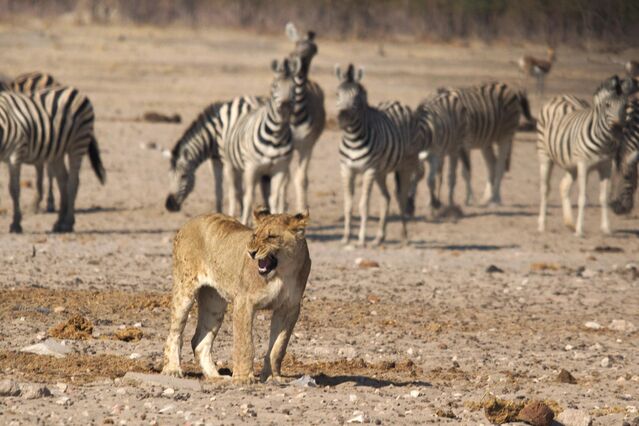Forgiveness
Why We Are Fascinated by Serial Killers
We have our imaginative minds and evolutionary history with predators to blame.
Posted May 1, 2022 Reviewed by Jessica Schrader
Key points
- Like other animals, humans have evolved strategies for avoiding predators. These apply to predatory people as well.
- Many animals, including humans, take advantage of safe opportunities to learn about predators' behaviors and motivational states.
- Thanks to our ability to imagine and mentally simulate events, humans have many opportunities to learn about serial killers in a safe setting.

A recent Twitter thread about our fascination with serial killers stirred up some buzz. Most people will say they despise serial killers and don't want to glorify them, yet they will often find themselves struggling to avoid the newest true-crime podcast or documentary. Some of the most listened-to podcasts, most-read books, and most-watched TV shows are about murderous men. This may leave some wondering—what is the psychology behind this strange behavior?
Our fascination with serial killers is part of a broader tendency that humans have to be intrigued by dangerous situations. I’ve been conducting research on a phenomenon I call morbid curiosity, which refers to the tendency to seek out information about dangerous circumstances. As part of this research, I’ve developed the Morbid Curiosity Test, which measures how morbidly curious an individual is and the types of things they are morbidly curious about. I’ve found that morbid curiosity tends to fall into four domains: supernatural danger, body violations, violence, and the minds of dangerous people. Our fascination with serial killers falls within the latter two domains, especially the minds of dangerous people.
To better understand our fascination with serial killers, we first need to understand our evolutionary relationship with predators. Effectively avoiding a predator is an essential skill for most animals. However, predators aren’t always looking for a meal. If a predator isn’t hungry, it’s not in the predator’s best interest to chase after prey. Hunting is energetically costly, it isn’t always successful, and food can’t be safely and easily stored after it’s caught.
Prey often live in close proximity to their predators. But, because the predators aren’t always hungry or hunting, it is in the prey’s best interest to be able to identify when a predator is hungry or actively hunting. One way to learn when the predator is hunting is to inspect the predator from a distance. This allows the prey to learn more about how the predator looks, what its habits are, and its current motivational state. This behavior, called predator inspection, is common in nature, especially among subadults.

If a zebra, gazelle, or wildebeest always ran when they saw a lion or cheetah, they would exhaust themselves. This would put them in even greater danger of being preyed upon. Instead, these animals pay close attention to predators and learn how to identify them and their motives. It’s a risky tactic to inspect a predator in the wild. But, over the course of evolutionary time, this risk has paid off when it's done under the right circumstances.
Learning about predators is just as important for humans as it is for other animals, and this was especially true over evolutionary time. While our risk of being preyed upon today by lions and cheetahs is relatively low, we still face the risk of being preyed upon by dangerous people. Our minds deal with dangerous people like they do with other dangerous predators: We try to learn about them when it is safe to do so because this helps us know how to more effectively avoid them.
Humans have a uniquely impressive ability to imagine events and experience them through mental simulation. By imagining dangerous situations, humans can generate scenarios where the perceived learning benefit is high, but the cost of learning is low. These low-cost opportunities to observe dangerous situations attract our attention, acting like candy for our anxious minds.

This cost-benefit shift in learning about dangerous situations lies at the core of our morbid curiosity, our love of violent thrillers, and our fascination with serial killers. We thirst for knowledge about the killer. Why does he behave as he does? How does he act around others when he isn’t hunting? What are his motivations for selecting his victims? Perhaps most importantly, what are the signs that someone might be a killer? Questions like these intrigue us because they strike at something deep in our animal nature—the need to avoid predation. Our questions are not so different from the zebra’s, we just have a clever way of investigating them thanks to our powerful imagination.
If you know something about the motivations and behaviors of serial killers, you’re in a better position to identify and avoid them. We are voracious consumers of thrillers, horror, and true crime precisely because these genres provide a safe way to learn about threats. We face no danger of being preyed upon by the serial killer in a true-crime podcast, but we do stand to learn something about him. More importantly, we stand to learn how to identify and understand other dangerous people like him—people we may someday meet.
References
Scrivner, C. (2021). The psychology of morbid curiosity: Development and initial validation of the morbid curiosity scale. Personality and Individual Differences, 183, 111139. https://doi.org/10.1016/j.paid.2021.111139
Vicary, A. M., & Fraley, R. C. (2010). Captured by true crime: Why are women drawn to tales of rape, murder, and serial killers?. Social Psychological and Personality Science, 1(1), 81-86. https://doi.org/10.1177%2F1948550609355486
FitzGibbon, C. D. (1994). The costs and benefits of predator inspection behaviour in Thomson's gazelles. Behavioral Ecology and Sociobiology, 34(2), 139-148. https://doi.org/10.1007/BF00164184


